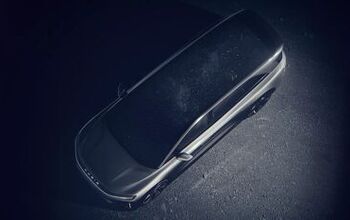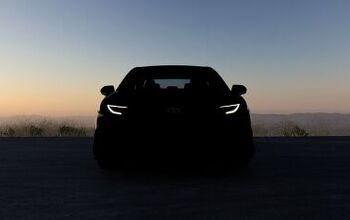Hyundai: Direct Injection Has Its Limits
We’ve spilled a few pixels on these pages over Hyundai’s dedication to direct injection (DI) technology, even going as far as to crown Hyundai the “new Honda” of motor technology. But DI technology isn’t without its downsides, and Hyundai tells Automotive News [sub] that the technology isn’t likely to appear on future engines with less than two liters of displacement.
Specifically, a 1.6 liter engine, destined for Hyundai’s future compacts like the Accent likely won’t see direct injection, as Hyundai’s North American powertrain director tells AN [sub] “it gets more difficult when you have four valves, the injector and the plug all in a very small-sized bore,” like the 1.6 liter engine under development. But, he adds, “there is still more room to get more fuel efficiency” out of small-capacity engines without DI.
This is an interesting development in that Chrysler is heavily relying on downsized, direct-injected and turbocharged engines from Fiat, including a 1.4 liter engine that will first see action in the US under the hood of the Fiat 500. Though the 500 won’t compete with any Hyundai models, future mass-market B- and C-segment Chrysler offerings are expected to utilize sub-two liter DI engines, meaning they’ll face a challenge in competing with Hyundai’s cheaper, non-DI powerplants.
More by Edward Niedermeyer


































Comments
Join the conversation
In a sense ALL diesels are direct injection. In fact they have to be, as the diesel ignition process is started (and timed) by the fuel getting exposed to the high temperature compressed air in the combustion chamber. The "indirect" diesels actually have a "pre-combustion" chamber where the fuel is injected but this chamber is at the same pressure as the main combustion chamber above the piston head. Quite different from the usual indirect gasoline injection where the fuel is injected into the (low pressure) intake port. Mercedes figured out that indirect gas injection was almost as good as(and a lot simpler/cheaper than) direct gas injection back in the '50s so it is no surprise that Hyundai comes to the same conclusion half a century later. Per GM, DI is good for a 3% gain in bsfc so (technology fan boys aside) it is not really that big a deal for the end user.
Hmm... I thought that DI was "All That" - but it seems like the tech and its added cost/complexity doesn't add a lot to a spark-ignited engine. I suppose that its real value is to the automakers' fleet CAFE average - DI could push it over the top, and it's probably cheaper than more aluminum and high-strength steel in some applications.
New, high pressure direct injection diesels are available in very small sizes. Hyundai has it on the Accent outside of America. The issue in packaging is of how to put the injector in with the spark plug and the ubiquitous four valves (which maximize airflow and efficiency within the head). The problem is, as one poster mentioned, the insanely high costs of such systems, both to build and maintain. And even the most robust of these will start to see problems past the 100,000 mile mark. And replacing these piezo-injectors isn't cheap. They're typically around five hundred dollars or more each for diesel units... and you have four of them on a typical compact. The higher pressures mean shorter service life for each injector versus a low-pressure system. Which is why Nissan is looking at a dual-injector system, which I think is brilliant. the benefits of direct injection without the insanely high component prices. These systems, though, are indispensable on a modern diesel that needs to meet emissions requirements. They're not indispensable on a non-turbocharged (on turbocharged engines, their main benefit is to help it run a whole lot leaner at low-rpms...) gasoline engine... and Hyundai is quite rightly identifying them as an un-needed expense on small cars. Unless, of course, you downsize to two or three cylinders for the same displacement (say two cylinders for engines up to 1000cc, three for engines up to 1600cc). Give up a little refinement to give yourself more space in the head for packaging equipment. Would make the engines cheaper overall. Of course, many manufacturers are going this route. There are even plans for three-pot mills in the 3-series and the C-Class. As an added bonus, three-pots sound much better than four-pots. ;)
Man... THIS is where I get amazed at them at. They actually put the MONY into engine technology, doing something few (besides GM and those stupid HOWIE ads) are.. and excelling at. These are the motors I wish was in the Accord.. to give it better economy, then again I wish Accord was smaller also. Now.. For this.. AMEN TO THEM. Finally gettin out in front of the others.. on something important. Now.. If theyd start MB-like CROWING about their engine technology and body strength and show off how hard they worked to put these cars together.. AND DON'T MENTION THAT DAMN BAIT AND SWITCH WARRANTY... people might actually give them some... credibility. They should start crowing about their designer (that they cribbed from Audi). Then Id be happier about them as a company.. not saying Id buy.. But this motor.. DOES make me happy. Is that wrong?